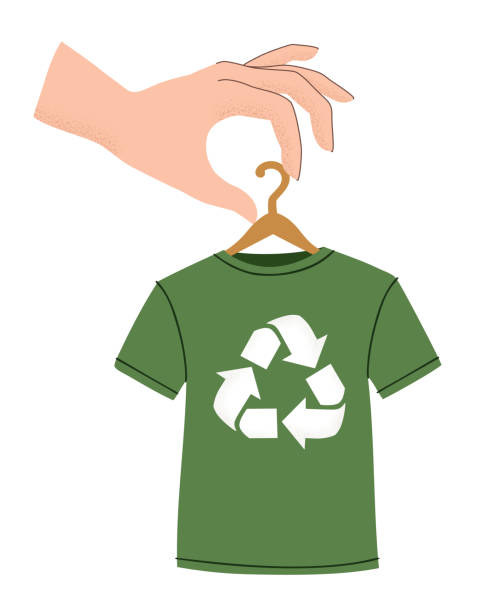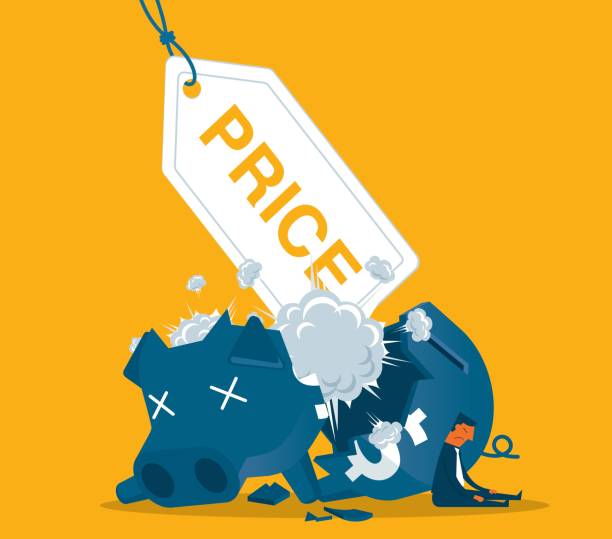The fashion landscape is changing, and there’s a growing appetite for unique, custom clothing. Imagine being the person who fills that niche, all from the comfort of your own home. With today’s technology and resources, launching a small clothing business from your living room is feasible and potentially lucrative. Our 9-step guide aims to equip you with all the necessary knowledge, covering topics from market research to the final sale. If you’ve ever wanted to merge your love for fashion with entrepreneurship, now’s the perfect time. Let’s explore how you can turn your fashion dreams into a profitable reality.

Step 1: Market Research
The Importance of Understanding the Market
So you’ve got some great ideas, but before you start sketching designs or buying fabric, it’s crucial to understand the market you’re stepping into. Why is this so important when figuring out how to start a small clothing business from home? Well, imagine spending your time and resources making hipster-style clothing only to find out your local market craves athleisure wear. Knowing the market will help you tailor (pun intended!) your business to meet specific needs and demands, saving you time and money in the long run.

Identifying the Target Audience
Your next step is to pinpoint who your target audience is. Are you targeting busy moms, trendy teens, or fitness enthusiasts? Maybe you’re focusing on sustainable fashion lovers? Knowing your target audience will help you make critical decisions, like what kind of materials to use, the styles to offer, and how to price your items. Most importantly, understanding your audience will help you create marketing strategies that speak directly to them later.
Competitor Analysis
Last but certainly not least, take a good look at your competition. What are other similar businesses doing? What are they doing right? And perhaps more importantly, what are they doing wrong? This will give you invaluable insights.
Consider their designs, materials, pricing, marketing strategies, and customer reviews. This will help you understand where you can fit in and how you can stand out. Maybe there’s a gap in the market for plus-sized activewear, or people are complaining about the lack of sustainable options in baby clothing. Whatever it is, understanding your competitors will help you find your unique selling point.
Step 2: Business Plan
Why You Need a Business Plan
The next vital step in learning how to start a small clothing business from home is creating a solid business plan. Think of it as your roadmap for success, helping you navigate the exciting but sometimes tricky landscape of entrepreneurship. Whether you’re bootstrapping your venture or planning to woo investors, a business plan isn’t just a nice-to-have; it’s a must-have.

Elements to Include in Your Business Plan
Business Goals
First, outline your business goals clearly. Are you aiming to be the neighborhood’s first choice for handmade scarves, or are you targeting a broader market with an online store? Setting specific, measurable, achievable, relevant, and time-bound (SMART) goals will give your venture direction and purpose.
Target Market
Remember the target market you identified in Step 1? Time to elaborate on that. Whether it’s eco-conscious millennials or busy parents, knowing your target market inside out is essential when figuring out how to start a small clothing business from home. Your marketing strategies, product designs, and even choice of fabric will hinge on who you’re selling to.
Marketing Strategy
Your business plan must also outline your marketing strategy. How do you plan to reach your customers? Whether social media advertising, partnerships with influencers, or search engine optimization (SEO), your marketing strategy should be tailored to communicate effectively with your target audience.
Financial Projections
Last but not least, let’s talk about money. Financial planning might not be the most glamorous part of learning how to start a small clothing business from home, but it’s certainly one of the most critical. Your business plan should include detailed financial projections, covering everything from initial startup costs to expected revenue and operational expenses. This will help you budget and plan and attract potential investors or secure loans if needed.
Step 3: Legal Requirements
Business Structure
The type of business structure you choose be a sole proprietorship, LLC, or corporation—will affect your taxes, liability, and even your ability to raise capital. For many people figuring out how to start a small clothing business from home, a sole proprietorship or LLC is often a good starting point due to their simplicity and lower startup costs. However, it’s crucial to research and decide what suits your specific needs best.

Necessary Licenses and Permits
Operating a business, even one from home, often requires some licenses and permits. This could range from a general business license to specialized textile or fashion industry permits. Some areas may also require a home occupation permit if you run your business from home. Ignorance isn’t bliss here; failing to get the necessary permissions can result in fines and could even force you to shut down.
The Importance of Consulting a Legal Advisor
Legal jargon can be intimidating, and the last thing you want is to get tangled in legal troubles. That’s why consulting a legal advisor is crucial when starting a small clothing business from home. A lawyer can guide you through the maze of business laws, help you register your business, and ensure you comply with all local, state, and federal regulations. Sure, it’s an added cost, but consider it an investment in your business’s future.
Step 4: Branding
The Importance of a Strong Brand Identity
Branding isn’t just about slapping a name and a logo on your products; it’s about creating an identity for your business that resonates with your target audience. When people think about your brand, what do you want to come to mind? Quality, innovation, comfort, or perhaps sustainability? Establishing a solid brand identity is essential for building trust and making a lasting impression. It’s an integral part of how to start a small clothing business from home.

How to Come Up With a Business Name
The name of your business is often the first thing people will know about you, so choose wisely! Your business name should be catchy, easy to remember, and reflect your brand identity. It’s a good idea to brainstorm multiple names and check for trademarks to ensure your name is unique. Also, consider how it sounds and looks in writing and if it’s easy to spell, especially important for online searches.
Creating a Logo and Color Scheme
Once you’ve picked a name, it’s time to think about the visual elements: logo and color scheme. Your logo should be a simple yet powerful representation of your brand. It will appear on your clothing labels, business cards, and social media accounts, so make sure it’s versatile. A professional designer can help you create a logo that is both memorable and effective.
As for your color scheme, choose colors that reflect the emotions or feelings you want your brand to evoke. For instance, green signifies sustainability or freshness, while black denotes luxury or sophistication. Keep your target audience in mind—what colors would resonate with them?
Step 5: Sourcing Materials
Where to Find Quality Materials
Your designs may be top-notch, but your clothing business won’t go far without quality materials. You can source fabrics and other materials from local suppliers or look for them online. Wholesale markets and trade shows are also excellent places to find a variety of quality materials. Make sure to research the reliability and reputation of the supplier, as you don’t want to be stuck with subpar fabric or delayed deliveries.

Tips for Negotiating with Suppliers
Negotiating with suppliers is an art in itself. Don’t settle for the first price offered; try to negotiate favorable terms for both parties. Always keep in mind the quality, payment terms, and delivery schedules. Buying in bulk often provides a cost advantage but weigh this against your storage space and cash flow considerations for your small clothing business at home.
Importance of Sample Testing
Before placing a large order, always ask for samples. This is a critical step in ensuring that the material meets your quality standards and is consistent with what you have in mind. It’s far better to catch potential issues at the sampling stage than after you’ve already manufactured a large batch of clothes.
Step 6: Design and Production
Basic Setup Needed for a Home-Based Production Unit
As you work out how to start a small clothing business from home, consider the basic setup you’ll need for production. A good-quality sewing machine and additional tools like fabric shears, rulers, and sketching supplies are necessary. Depending on your designs, you might also need specialized equipment like a serger or embroidery machine. Create a dedicated workspace to keep everything organized; it will make your production process far more efficient.
Prototyping Your Clothing Items

Before diving into mass production, always create a prototype or sample piece. This allows you to test your design, fit, and overall look. Ask friends or family for feedback, or consider a small focus group from your target audience. Make necessary adjustments to your design based on this feedback.
Quality Control Measures
Quality control isn’t just for big factories; it’s a vital part of any business, especially when learning how to start a small clothing business from home. Set up a checklist for each item, examining stitching, fit, and finish, and make sure every product passes the test before it goes out to the customer. Consistency is key to building a brand that people trust.
Step 7: Pricing Strategy
How to Set a Fair Yet Profitable Price
Pricing is a crucial element that can make or break your small clothing business. Setting your price too high might drive potential customers away, while pricing too low could make your business unprofitable. To find that sweet spot, consider factors like material costs, labor, and overheads like electricity, equipment maintenance, and any hired help you may have.

Considerations Like Material Costs, Labor, and Overhead
When setting your price, start by calculating the cost of materials per item and add the labor costs, which could be your time or any outsourced help. Don’t forget the overhead costs like utilities, equipment depreciation, and even the internet bill if you’re working from home. Add these up to find your cost price per item. Finally, add your desired profit margin to arrive at the retail price.
Step 8: Online Presence
Importance of Having an Online Store
In today’s digital age, having an online store is almost necessary, especially when figuring out how to start a small clothing business from home. An online store increases your reach and provides a convenient platform for customers to browse and purchase your products 24/7.
Utilizing Social Media for Marketing
Don’t underestimate the power of social media when launching your small clothing business. Platforms like Instagram and Facebook are ideal for showcasing your products and connecting directly with your target audience. Social media can also be a fantastic avenue for promotions, customer feedback, and real-time customer service.

SEO Basics for Your Online Store
SEO (Search Engine Optimization) might sound complicated, but basic SEO practices can significantly impact your online store’s visibility. Utilize relevant keywords in your product descriptions, meta descriptions, and headers. This can help your online store rank higher in search engine results, making it easier for potential customers to find you.
Step 9: Sales and Distribution

Different Avenues to Sell Your Clothing
Congratulations, you’re almost there! With your products ready, it’s time to think about how to get them into the hands of your customers. You have multiple avenues for sales, such as local markets, pop-up shops, and, of course, your online store. You could also consider selling through third-party platforms like Etsy or Amazon to reach a broader audience.
Setting up an E-Commerce Platform
Your online store is a significant part of your sales strategy. Platforms like Shopify, WooCommerce, or Magento can make the setup process more accessible with their user-friendly interfaces and customizable templates. These platforms also offer various tools to manage inventory, payments, and customer relationships, making them invaluable for anyone learning to start a small clothing business from home.
Partnership and Collaboration for Increased Sales
Don’t overlook the power of partnerships and collaborations to boost your sales. Teaming up with influencers, bloggers, or other complementary businesses can expose your brand to a broader audience. Partnerships can take various forms, like co-branded limited editions, social media takeovers, or even simple affiliate programs.
Conclusion
There you have it, a 9-step guide on how to start a small clothing business from home. Each step is crucial in building a successful, home-based clothing business from initial market research to the final sales and distribution stage. While challenges may be ahead, the excitement and potential rewards are worth the effort.
By following this guide, you’re not just stitching fabrics but weaving the fabric of your entrepreneurial dream. As you embark on this journey, remember that every big brand started with a simple idea. With hard work, a solid plan, and a dash of creativity, there’s no limit to what you can achieve.
FAQs (How to Start a Small Clothing Business from Home )
How much initial investment is required to start a home-based clothing business?
The initial investment can vary widely depending on several factors, including the quality of materials, equipment needed, and marketing costs. On the lower end, you can start with a few hundred dollars, especially if you already have some necessary equipment, like a sewing machine. However, to operate more professionally and at a larger scale, a starting budget of $5,000 to $10,000 could offer more flexibility and options.
Do I need to be a fashion designer to start a clothing business?
While having a background in fashion design can undoubtedly be an asset, it’s not strictly necessary. What’s crucial is a strong sense of style, an understanding of fabrics, and an eye for detail. Many successful business owners in the clothing industry started without formal training in fashion design but had a keen sense of the market and consumer demands.
How do I protect my clothing designs legally?
Protecting your designs can be crucial for your brand’s integrity and your business’s long-term success. You can apply for design patents to protect the unique appearance of your garments. Copyright laws can also protect original prints and patterns. Additionally, trademark your brand name and logo to safeguard your brand identity. Legal counsel is recommended to navigate through these complex processes.
How do I set up an online store for my clothing business?
Various eCommerce platforms like Shopify, WooCommerce, or BigCommerce offer user-friendly ways to set up an online store. They provide multiple design templates and offer functionalities like payment gateway integration, SEO tools, and customer relationship management. Choose a platform that aligns with your brand’s needs and scale.
What are the best ways to market my home-based clothing business?
In today’s digital era, social media platforms like Instagram, Pinterest, and Facebook are invaluable for marketing. Beyond that, you can use SEO and content marketing methods to drive organic traffic to your online store. Influencer partnerships and email marketing are also effective ways to engage potential customers.
Is it essential to have a business plan?
Yes, a well-drafted business plan acts as a roadmap for your business. It helps in planning the operational and financial aspects, which makes it easier to attain short-term and long-term goals. It’s also essential if you are seeking external funding from investors or financial institutions.
How do I manage inventory efficiently?
Effective inventory management can be done through various software options that track your materials and anticipate future needs based on sales trends. Techniques like Just-in-Time inventory can also help you minimize costs by ordering materials only as needed.
How do I ensure quality control?
Quality control is fundamental for the success of your clothing business. Implement a system to check each item for defects in stitching, fabric, and fit. This could range from a simple visual inspection to more rigorous methods like wear and tear testing.
Can I run a clothing business from home on my own?
It’s possible to start small and run the business by yourself initially. However, as you scale, you’ll likely need to hire additional help, whether it’s for production, marketing, or customer service. Having a clear plan will help you understand when it’s time to expand your team.
